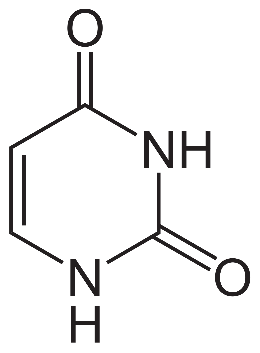Select Question Set:
Which element makes up the maximum % weight of the human body?
1.
carbon
2.
hydrogen
3.
nitrogen
4.
oxygen
Subtopic: Introduction |
66%
From NCERT
Please attempt this question first.
Hints
Please attempt this question first.
Which of the following components of the acid insoluble fraction of a cell is not a macromolecule?
| 1. | proteins | 2. | nucleic acids |
| 3. | polysaccharides | 4. | lipids |
Subtopic: Element Analysis |
88%
From NCERT
Please attempt this question first.
Hints
Please attempt this question first.
Which of the following is a zwitter ion?
| 1. |  |
2. |  |
| 3. |  |
4. |  |
Subtopic: Zwitter ion & Peptide Bond |
91%
From NCERT
Please attempt this question first.
Hints
Please attempt this question first.
Identify the amino acid (shown in the molecule given below):


| 1. | Glycine | 2. | Serine |
| 3. | Alanine | 4. | Methionine |
Subtopic: Nucleic Acid: Nucleotides |
83%
From NCERT
Please attempt this question first.
Hints
Please attempt this question first.
Identify the molecule shown in the figure:


| 1. | Uracil | 2. | Thymine |
| 3. | Cytosine | 4. | Guanine |
Subtopic: Nucleic Acid: Nucleotides |
76%
From NCERT
Please attempt this question first.
Hints
Please attempt this question first.
If we represent the chemical composition of living tissue from abundance point of view, the most abundant chemical in living organisms is:
| 1. | Water | 2. | Carbohydrates |
| 3. | Proteins | 4. | Lipids |
Subtopic: Element Analysis |
86%
From NCERT
Please attempt this question first.
Hints
Please attempt this question first.
Identify the incorrect statement:
| 1. | Each protein is a polymer of amino acids. |
| 2. | A protein is a heteropolymer and not a homopolymer. |
| 3. | Essential amino acids can be synthesized in our body. |
| 4. | Collagen is the most abundant protein in animal world. |
Subtopic: Proteins |
87%
From NCERT
Please attempt this question first.
Hints
Please attempt this question first.
Which end of the glycogen molecule is the reducing end?
1. The left
2. The right
3. The right and the left both
4. Neither the right nor the left
1. The left
2. The right
3. The right and the left both
4. Neither the right nor the left
Subtopic: Carbohydrates: Starch & Glycogen |
80%
From NCERT
Please attempt this question first.
Hints
Please attempt this question first.
Identify the correct statements:
1. Only a and b
2. Only a and c
3. Only b and c
4. Only c and d
| a: | Plant cell walls are made of cellulose. |
| b: | Fungal cell walls are made of chitin. |
| c: | True bacterial cell walls are made of lipopolysaccharides. |
| d: | Archaeal cell walls are made of sporopollenin. |
2. Only a and c
3. Only b and c
4. Only c and d
Subtopic: Carbohydrates |
93%
From NCERT
Please attempt this question first.
Hints
Please attempt this question first.
Nucleic Acids:
1. Only I is correct
2. Only II is correct
3. Both I and II are correct
4. Both I and II are incorrect
| I: | are polynucleotides. |
| II: | are constituents of the true macromolecular fraction of any living tissue or cell. |
2. Only II is correct
3. Both I and II are correct
4. Both I and II are incorrect
Subtopic: Nucleic Acid |
86%
From NCERT
Please attempt this question first.
Hints
Please attempt this question first.
Select Question Set:
